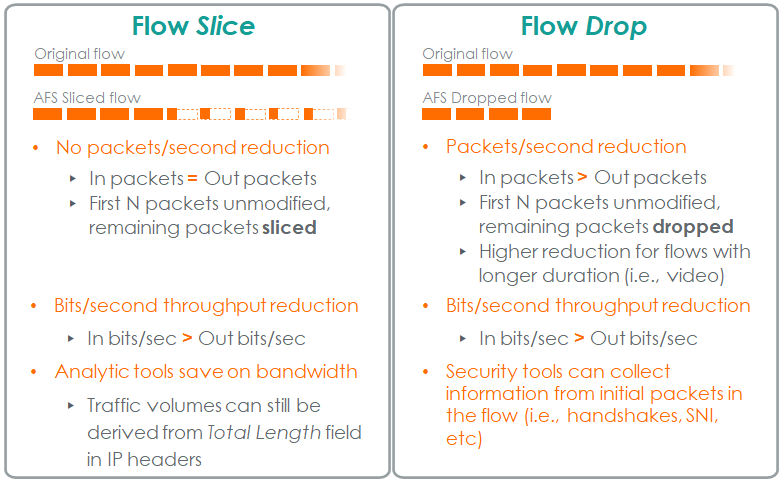Optimizing Long Data Flows to Improve Probe's Performance (6.3)
Introduction
Availability of higher bandwidth, advancements in virtual and cloud technologies, and improvements in wireless internet connectivity and speeds have helped increase customer delight. As the demand for data has surged, there is an increase in bandwidth due to long data flows. This hinders the monitoring by constraining the tool resources. The GigaSMART® Advanced Flow Slicing (AFS) application helps in optimizing the long data flows. It has enabled some of our customers to save over 70% of the bandwidth. This Gigamon Validated Design (GVD) illustrates how to deploy AFS and reduce traffic to the tools.
Design Topology

Design Overview
This design topology illustrates the user plane and its traffic flow in a 4G core network. A single subscriber may carry hundreds of concurrent flows between the User Equipment (UE) and multiple remote hosts (inner flows). The first few packets in each of these flows contain valuable information for the monitoring tools, while the remaining packets may not be as relevant. Using AFS, the first N packets in a flow can be forwarded to the tools for monitoring and the rest of the packets can be either sliced or dropped as per the tool’s preference. Even though AFS is demonstrated for 4G, it is agnostic to the type of service that is 3G or 5G.
AFS may be deployed to slice or drop individual flows. This means, AFS will forward to the monitoring tools the first N packets of a flow and then can be configured to slice or drop the remaining packets. The figure below illustrates the main differences.

WTo learn more about this solution, read complete details on the Gigamon Community: Optimizing_Long_Data_Flows_to_Improve_Probe's_Performance